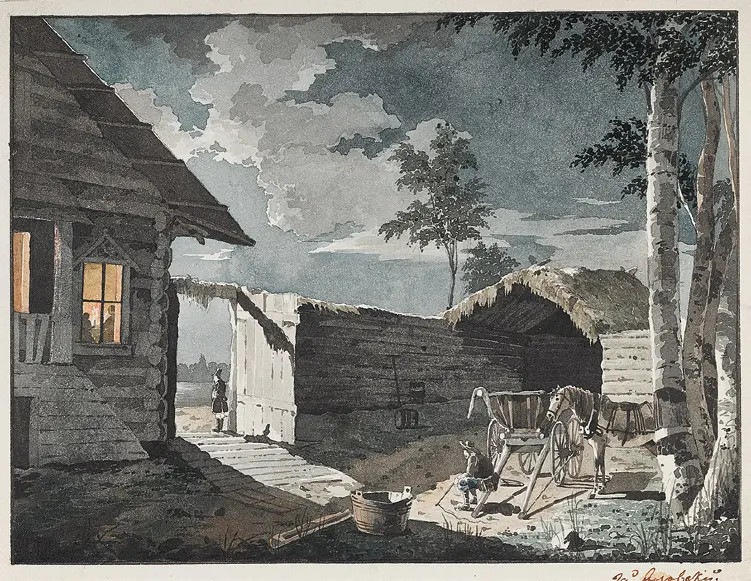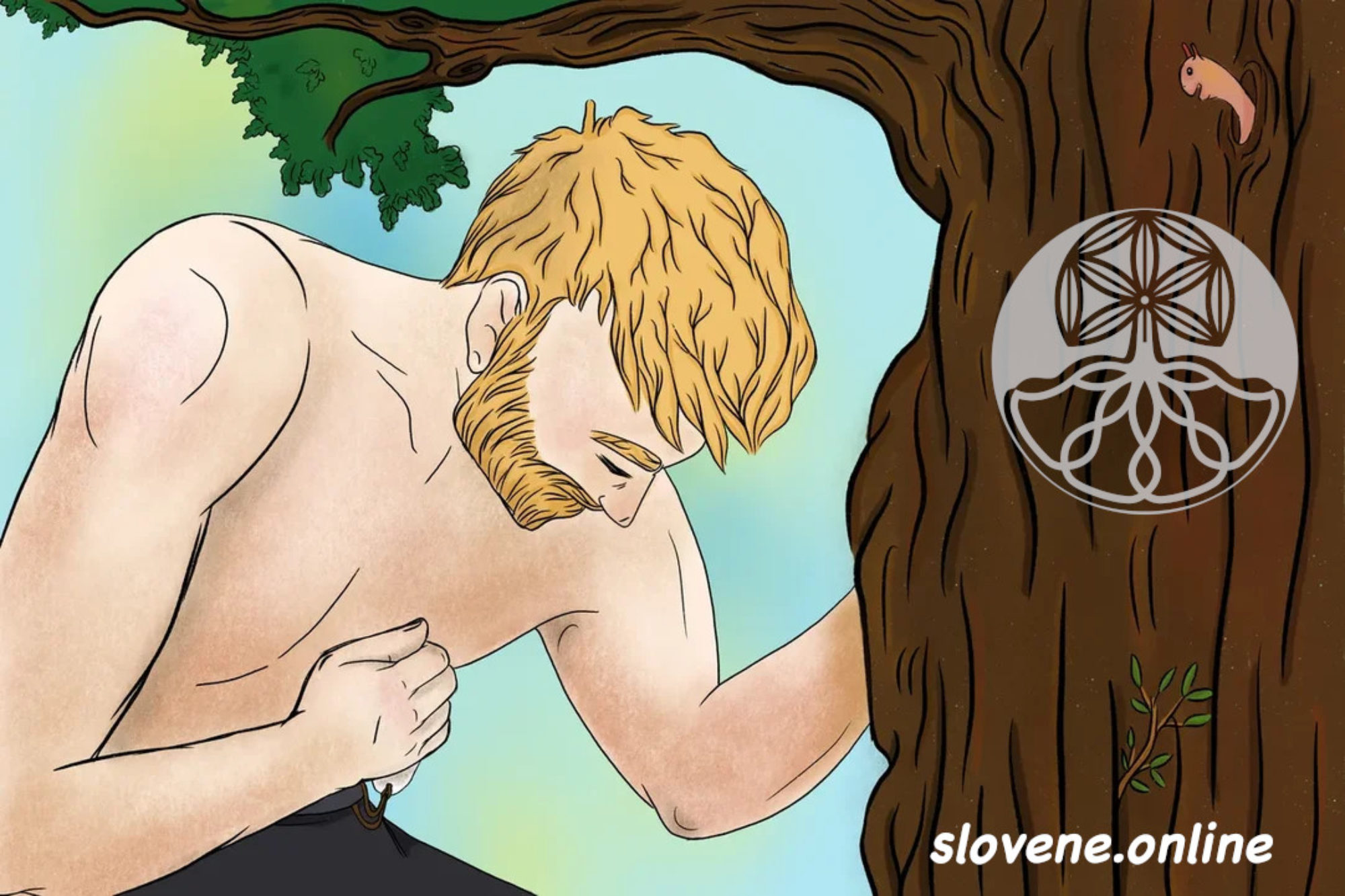Slavic people performed many rituals in the yard, to ensure the well-being of their home and household. In Serbia, during Kolyada (коледа) celebrations, people danced around a bread loaf, fibers for distaff and a piece of dry meat laid in the middle of the yard – imitating a struggle with invisible evil forces, expelling them from all buildings and corners of the house. Russians in Vladimir region on the day of the first pasture of cattle drove an aspen stake in the middle of the yard to protect cattle from misfortunes and diseases during grazing. Ukrainians, during the wedding, placed “dezha” (a wooden tub for sourdough bread preparation) in the middle of the yard and walked a young couple around it.
ꏍ
The ritual of “warming the dead” was widespread in southern Russia. During celebrations around winter solstice, people burned huge bonfires in the middle of the yard, believing that they “warm” the souls of their ancestors who wander around their homes at this time. In Polesie region, during the Rusalia week, the mothers of the dead girls took out clothes for them into the yard, waiting for the deceased daughter to appear in a form of rusalka. And if the clothes remained intact, then it was believed that their daughter-rusalka did not come.
ꏍ
What other rituals performed in the yard do you know?
ꏍ
More interesting facts can be found in: “Slavic Antiquities” – encyclopedic dictionary in 5 volumes by Institute for Slavic Studies of the Russian Academy of Sciences.
Artist: Ivan Aivazovsky
ꏍ
Lapti (bast shoes) and evil spirits
Lapti (bast shoes) and evil spirits.
ꏍ
Bast shoes are often mentioned in connection to mythological creatures. Leshy and Polevik (field spirit) are often portrayed wearing lapti. Weaving bast shoes is a favorite activity of evil characters, and Vodyanoi in particular.
ꏍ
Bast shoes were also used to appease evil spirits. Vologda fishermen and millers threw bast shoes into the water to get help from Vodyanoi. If the cattle were lost, the peasants of the Smolensk region appealed to Rusalki. They went to the forest and brought with them bast shoes, footcloth, bread & salt and left it in a sack on a tree with the words: “Please, Rusalki, accept my gift, and return the cattle!”. In the Kostroma region, when moving to a new house, the owners went to the old yard with one bast shoe and invited Domovoy to go with them in that shoe. In the Vladimir region, people supplied Domovoy with shoes, by hanging old worn “little lapti” in the yard.
ꏍ
The need for shoes for Domovoy is understandable. But what would Rusalki do with them? 😉
ꏍ
More interesting facts can be found in: “Slavic Antiquities” – encyclopedic dictionary in 5 volumes by Institute for Slavic Studies of the Russian Academy of Sciences.
ꏍ


